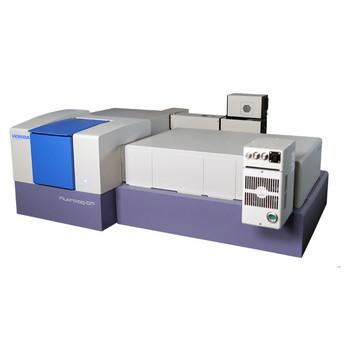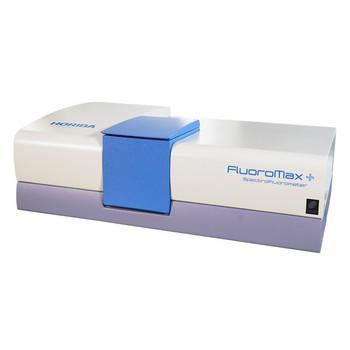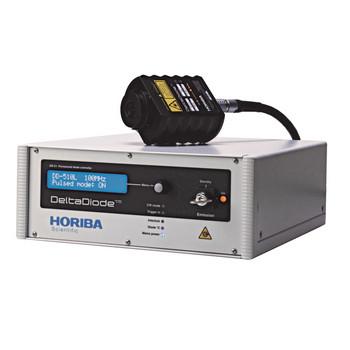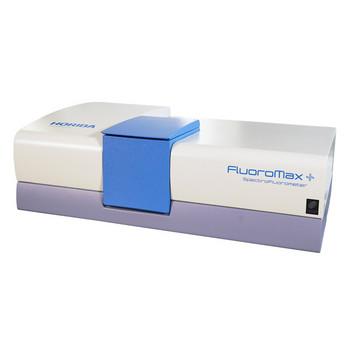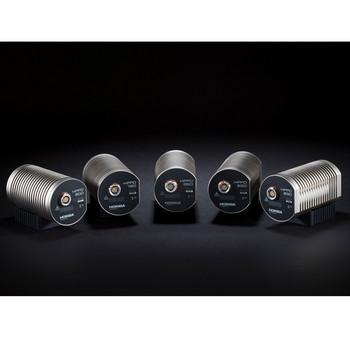Ultima - Our optimized fluorimeter for short lifetimes
Picoseconds to seconds: a compact fluorescence system optimized for short lifetime measurements
Ultima combines the latest in high temporal resolution TCSPC electronics, interchangeable high speed light sources and detector technologies, and our FluoroCube, the most flexible optical platform to offer the highest performance photon counting lifetime system available.
Choose from the most comprehensive range of pulsed light source and detector options, including:
- DeltaDiode Picosecond laser diodes from 370 nm to NIR
- Picosecond and Nanosecond LEDs from 260 nm to NIR
- Ti-sapphire laser and multi-photon options
- Highly integrated picosecond PMT modules
- Microchannel plate PMTs for the ultimate in time resolution
- UV to 1700 nm spectral coverage
Benefit from our 40 years of TCSPC experience by consulting with us to tailor the perfect lifetime system for your research.
Ultima-01(11)-DD
Lifetime system with emission monochromator (01) or excitation and emission monochromators (11) and diode laser excitation
- Large sample compartment (compatible with cryostats)
- Cell holder with facility for recirculating liquid temperature control
- Motorized excitation optics with UV-grade fused silica lenses, filter holder and mount for polarizer*: a wide choice of interchangeable laser diode and LED-based excitation sources are available as accessories
- Motorized emission optics with UV-grade fused silica lenses, filter holder and mount for polarizer*
- Emission monochromator (01,11 models): TDM-800 Seya-Namioka type, featuring motorized wavelength drive (200 nm to 800 nm), integral safety shutters interlocked to lid of sample compartment, and synchronized adjustable slits (1 nm to 32 nm)
- Excitation monochromator (11 model only): Seya-Namioka type, featuring motorized wavelength drive (200 nm to 800 nm), integral safety shutters interlocked to lid of sample compartment, and synchronized adjustable slits (1 nm to 32 nm)
- DeltaDiode pulsed diode controller module (software controlled)**
- PPD-650 (230-700nm) proprietary picosecond photon-detection module (interlocked with lid of sample compartment). PPD-850 and -900 available to extend spectral range to 850 and 920 nm accordingly
- FluoroHub A+ timing electronics - measures picoseconds to seconds (depending on excitation source)
- DataStation measurement software and DAS6 decay analysis software
- All cables and interconnections
- System supplied on a 37 x 70 cm baseplate
*Filters and polarizers are optional**DeltaDiodeTM sources must be ordered separately
Ultima Ultrafast 01-Ti
Our shortest lifetime (5 ps) system with emission monochromator, external mode locked laser (e.g. Ti:sapphire)**, and MCP PMT detector.
- Large sample compartment (compatible with cryostats)
- Cell holder with facility for recirculating liquid temperature control
- Motorized excitation optics with UV-grade fused silica lenses, filter and mount for polarizer*: a wide choice of interchangeable laser diode and LED-based excitation sources are available as accessories
- Motorized emission optics with UV-grade fused silica lenses, filter and mount for polarizer*
- Emission monochromator: TDM-800 Seya-Namioka type, featuring motorized wavelength drive (200 nm to 800 nm), integral safety shutters interlocked to lid of sample compartment, and synchronized adjustable slits (1 nm to 32 nm)
- Laser input optics for use with external mode-locked laser**
- R3809-50 MCP-PMT detector in cooled housing (interlocked with lid of sample compartment) with close-coupled CFD-2G-A picosecond timing amplifier/discriminator and Fluoro3PS ultra-stable HV detector power supply.
- FluoroHub A+ timing electronics - measures picoseconds to seconds (depending on excitation source)
- DataStation measurement software and DAS6 decay analysis software
- All cables and interconnections
- System supplied on a 37 x 70 cm baseplate
*Filters and polarizers are optional**Laser not included
Ultima Ultrafast 01-DD
Our short lifetime system with emission monochromator, interchangeable DeltaDiode laser excitation, and MCP PMT detector.
- Large sample compartment (compatible with cryostats)
- Cell holder with facility for recirculating liquid temperature control
- Motorized excitation optics with UV-grade fused silica lenses, filter holder and mount for manual polarizer*: a wide choice of interchangeable laser diode and LED-based excitation sources are available as accessories
- Motorized emission optics with UV-grade fused silica lenses, filter and manual mount for polarizer*
- Emission monochromator: TDM-800 Seya-Namioka type, featuring motorized wavelength drive (200 nm to 800 nm), integral safety shutters interlocked to lid of sample compartment, and synchronized adjustable slits (1 nm to 32 nm)
- DeltaDiode pulsed diode controller module (software controlled)**
- R3809-50 MCP-PMT detector in cooled housing (interlocked with lid of sample compartment) with close-coupled CFD-2G-A picosecond timing amplifier/discriminator and Fluoro3PS ultra-stable HV detector power supply.
- FluoroHub A+ timing electronics - measures picoseconds to seconds (depending on excitation source)
- DataStation measurement software and DAS6 decay analysis software
- All cables and interconnections
- System supplied on a 37 x 70 cm baseplate
*Filters and motorized polarizers are optional**DeltaDiode sources must be ordered separately




























